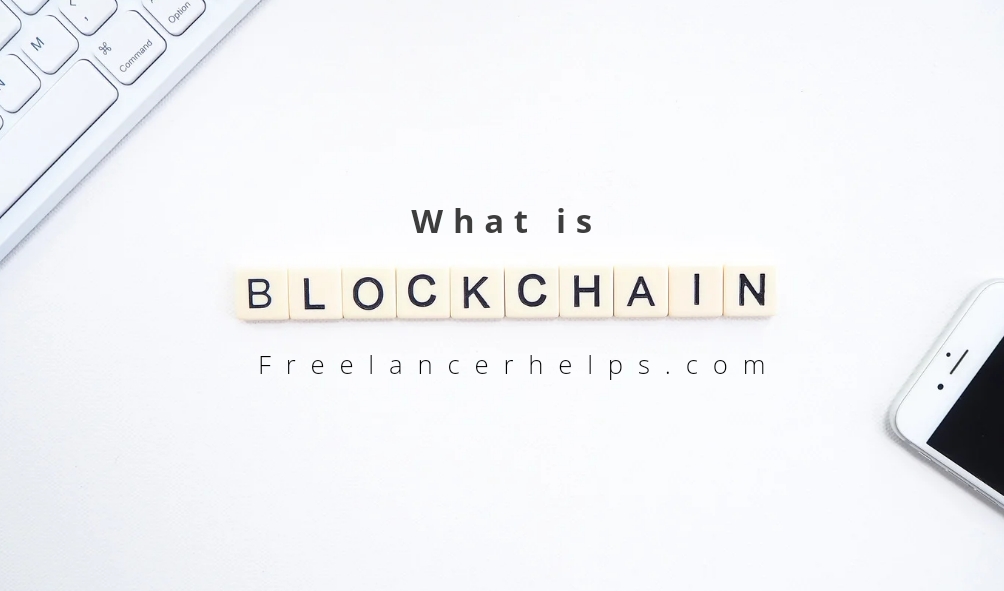What is Blockchain Technology and How it’s work ?

What Is Blockchain?
Blockchain technology is a decentralized, distributed ledger that stores a record of ownership of digital assets. No data stored on blockchain can be altered, making the technology a legitimate disruptor for industries like payments, cybersecurity and healthcare. Discover more about what it is, how it is used and its history.
What Is Blockchain Technology?
Blockchain, sometimes called distributed ledger technology (DLT), makes the history of any digital asset immutable and transparent through the use of a decentralized network and cryptographic hashing.
A common analogy of how blockchain technology works can be compared to how a Google Docs document works. When you create a Google Doc and share it with a group, the document is simply distributed rather than copied or moved. This creates a decentralized distribution chain that gives everyone access to the base document at the same time. No one is locked out waiting for changes from the other side, while all changes to the document are recorded in real-time, making changes completely transparent. But a significant gap to note is that unlike Google Docs, the main content and data on the blockchain cannot be changed once written, which adds to its level of security.
Of course, blockchain is more complex than a Google Doc, but the analogy is apt because it illustrates critical concepts.
How Does a Blockchain Work?
The goal of blockchain is to allow digital information to be recorded and distributed, but not edited. In this way, a blockchain is the foundation for immutable ledgers, or records of transactions that cannot be altered, deleted, or destroyed. This is why blockchains are also known as a distributed ledger technology (DLT).
First proposed as a research project in 1991, the blockchain concept predated its first widespread application in use: Bitcoin, in 2009. In the years since, the use of blockchains has exploded via the creation of various cryptocurrencies, decentralized finance (DeFi) applications, non-fungible tokens (NFTs), and smart contracts.
Public Blockchains vs Private Blockchains
There are both public and private blockchains. In a public blockchain, anyone can participate meaning they can read, write or audit the data on the blockchain. Notably, it is very difficult to alter transactions logged in a public blockchain as no single authority controls the nodes.
A private blockchain, meanwhile, is controlled by an organization or group. Only it can decide who is invited to the system plus it has the authority to go back and alter the blockchain. This private blockchain process is more similar to an in-house data storage system except spread over multiple nodes to increase security.
How Is Blockchain Used?
Blockchain technology is used for many different purposes, from providing financial services to administering voting systems.
Cryptocurrency
The most common use of blockchain today is as the backbone of cryptocurrencies, like Bitcoin or Ethereum. When people buy, exchange or spend cryptocurrency, the transactions are recorded on a blockchain. The more people use cryptocurrency, the more widespread blockchain could become.
“Because cryptocurrencies are volatile, they are not yet used much to purchase goods and services. But that is changing as PayPal, Square and other money service businesses make digital asset services broadly available to vendors and retail customers,” notes Patrick Daugherty, senior partner of Foley & Lardner and lead of the firm’s blockchain task force.
Banking
Beyond cryptocurrency, blockchain is being used to process transactions in fiat currency, like dollars and euros. This could be faster than sending money through a bank or other financial institution as the transactions can be verified more quickly and processed outside of normal business hours.
Asset Transfers
Blockchain can also be used to record and transfer the ownership of different assets. This is currently very popular with digital assets like NFTs, a representation of ownership of digital art and videos.
However, blockchain could also be used to process the ownership of real-life assets, like the deed to real estate and vehicles. The two sides of a party would first use the blockchain to verify that one owns the property and the other has the money to buy; then they could complete and record the sale on the blockchain.
Using this process, they could transfer the property deed without manually submitting paperwork to update the local county’s government records; it would be instantaneously updated in the blockchain.
How to Invest in Blockchain ?
You can’t actually invest in blockchain itself, since it’s merely a system for storing and processing transactions. However, you can invest in assets and companies using this technology.
“The easiest way is to purchase cryptocurrencies, like Bitcoin, Ethereum and other tokens that run on a blockchain,” says Gray.
Another option is to invest in blockchain companies using this technology. For example, Santander Bank is experimenting with blockchain-based financial products, and if you were interested in gaining exposure to blockchain technology in your portfolio, you might buy its stock.
For a more diversified approach, you could buy into an exchange-traded fund (ETF) that invests in blockchain assets and companies, like the Amplify Transformational Data Sharing ETF (BLOK), which puts at least 80% of its assets in blockchain companies.
Blockchain Advantages and Disadvantages
Most blockchains are designed as a decentralized database that functions as a distributed digital ledger. These blockchain ledgers record and store data in blocks, which are organized in a chronological sequence and are linked through cryptographic proofs. The creation of blockchain technology brought up many advantages in a variety of industries, providing increased security in trustless environments. However, its decentralized nature also brings some disadvantages. For instance, when compared to traditional centralized databases, blockchains present limited efficiency and require increased storage capacity.
Advantages :
Distributed
Since blockchain data is often stored in thousands of devices on a distributed network of nodes, the system and the data are highly resistant to technical failures and malicious attacks. Each network node is able to replicate and store a copy of the database and, because of this, there is no single point of failure: a single node going offline does not affect the availability or security of the network.
In contrast, many conventional databases rely on a single or a few servers and are more vulnerable to technical failures and cyber-attacks.
Stability
Confirmed blocks are very unlikely to be reversed, meaning that once data has been registered into the blockchain, it is extremely difficult to remove or change it. This makes blockchain a great technology for storing financial records or any other data where an audit trail is required because every change is tracked and permanently recorded on a distributed and public ledger.
For example, a business could use blockchain technology to prevent fraudulent behavior from its employees. In this scenario, the blockchain could provide a secure and stable record of all financial transactions that take place within the company. This would make it much harder for an employee to hide suspicious transactions.
Trustless system
In most traditional payment systems, transactions are not only dependent on the two parties involved, but also on an intermediary – such as a bank, credit card company, or payment provider. When using blockchain technology, this is no longer necessary because the distributed network of nodes verify the transactions through a process known as mining. For this reason, Blockchain is often referred to as a ‘trustless’ system.
Therefore, a blockchain system negates the risk of trusting a single organization and also reduces the overall costs and transaction fees by cutting out intermediaries and third parties.
Disadvantages
51% Attacks
The Proof of Work consensus algorithm that protects the Bitcoin blockchain has proven to be very efficient over the years. However, there are a few potential attacks that can be performed against blockchain networks. And 51% attacks are among the most discussed. Such an attack may happen if one entity manages to control more than 50% of the network hashing power.which would eventually allow them to disrupt the network by intentionally excluding or modifying the ordering of transactions.
Despite being theoretically possible, there was never a successful 51% attack on the Bitcoin blockchain. As the network grows larger the security increases and it is quite unlikely that miners will invest large amounts of money and resources to attack Bitcoin as they are better rewarded for acting honestly. Other than that, a successful 51% attack would only be able to modify the most recent transactions for a short period of time because blocks are linked through cryptographic proofs (changing older blocks would require intangible levels of computing power). Also, the Bitcoin blockchain is very resilient and would quickly adapt as a response to an attack
Private keys
Blockchain uses public-key (or asymmetric) cryptography to give users ownership over their cryptocurrency units (or any other blockchain data). Each blockchain address has a corresponding private key. While the address can be shared, the private key should be kept secret. Users need their private key to access their funds, meaning that they act as their own bank. If a user loses their private key, the money is effectively lost, and there is nothing they can do about it.
Inefficient
Blockchains, especially those using Proof of Work, are highly inefficient. Since mining is highly competitive and there is just one winner every ten minutes, the work of every other miner is wasted. As miners are continually trying to increase their computational power, so they have a greater chance of finding a valid block hash, the resources used by the Bitcoin network has increased significantly in the last few years, and it currently consumes more energy than many countries, such as Denmark, Ireland, and Nigeria

